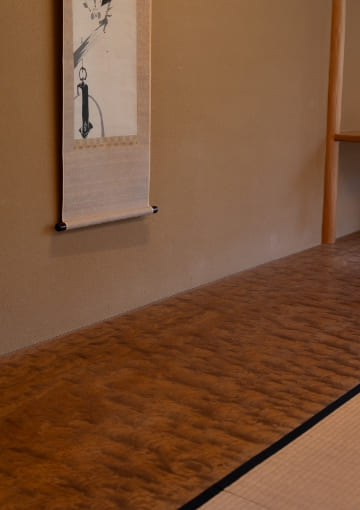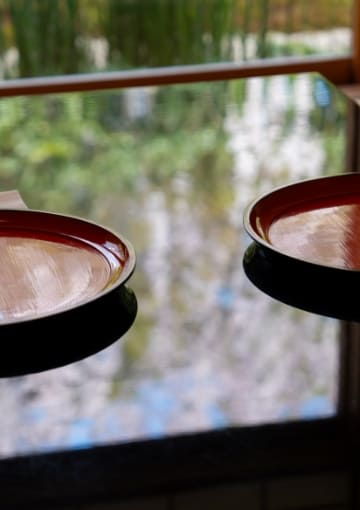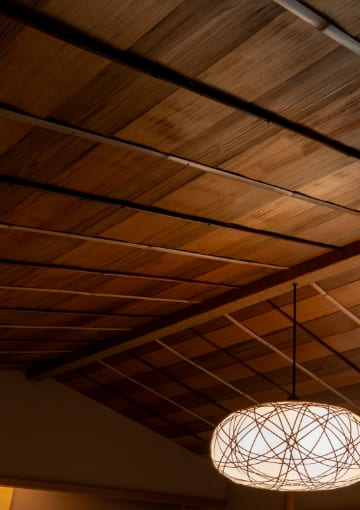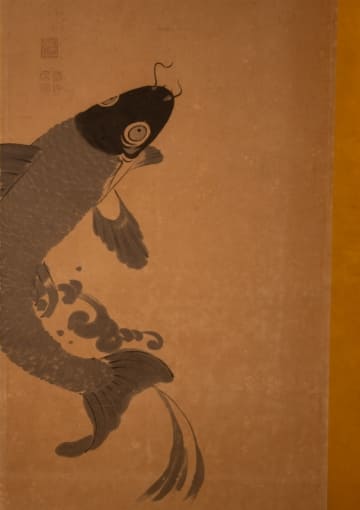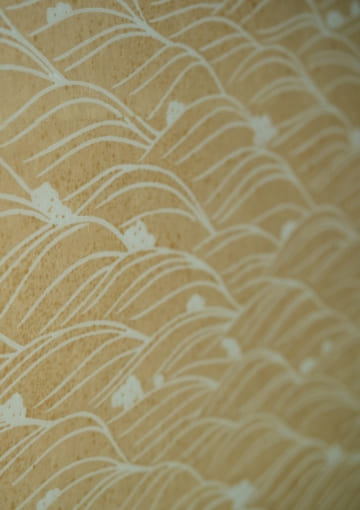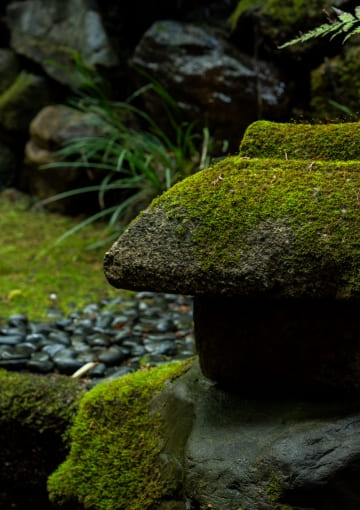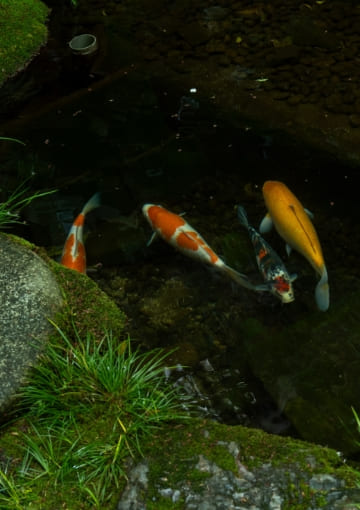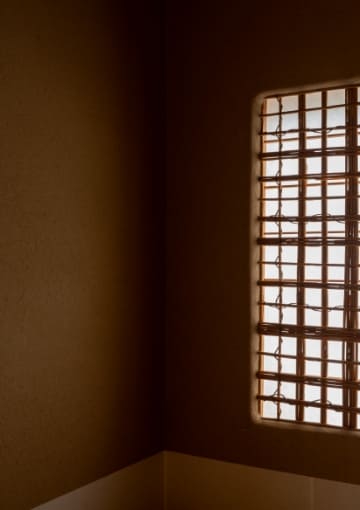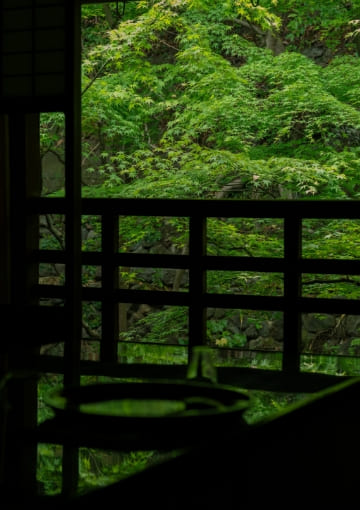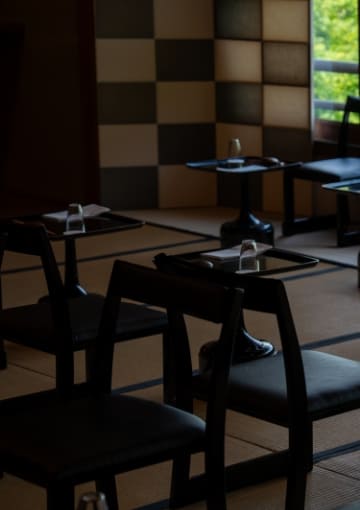明歴庵 MYOUREKIAN 6
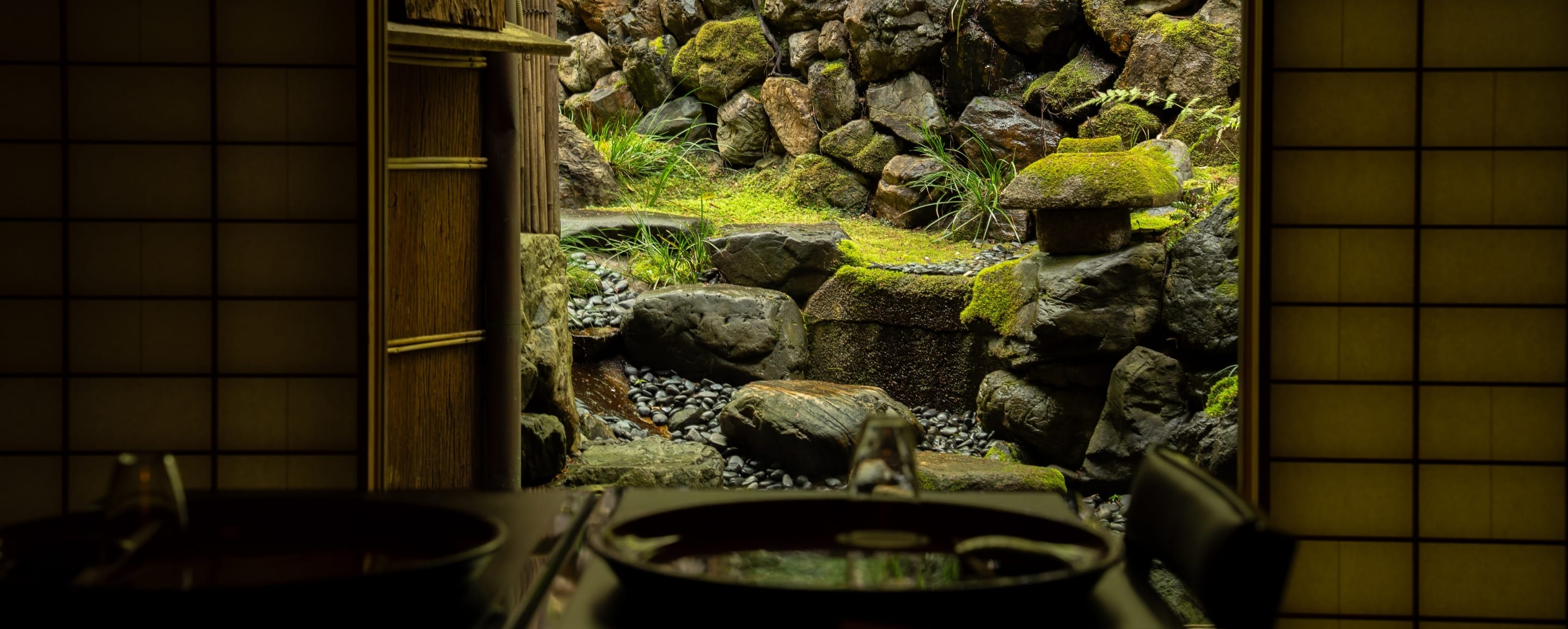
石や苔が時をかけて生みだす、
無作為の美。
庭造りのうえで「無作為の作為」という考え方があります。人の手が入っていることを感じさせないよう、自然な印象に見せることです。明歴庵の窓から見える、苔むした石垣や石灯籠も、まるで昔からそこにあったかのような佇まい。造園や石工芸の技術の粋です。苔は一年に数ミリ程度しか成長せず、これから何十年もかけて姿を変えていく、その歳月も見据えています。部屋は三代目主人が設計した客室にもなる茶室です。
Unintentional beauty created by stones, moss, and the passing of years
In Japanese garden design, a concept exists known as musakui-no-sakui, or ‘acts of the unintentional,’ which refer to the natural impression guests are left with by invisible handiwork. The moss-covered stone walls and the stone lantern visible from the windows of the Myoureki-an appear as if they have been there since ancient times. They are the embodiment of landscape gardening and stone craftsmanship. Moss grows a mere few millimeters annually, and its visage alters over the decades; this long-term outlook was taken into consideration when the room was created. This chashitsu tea room was designed by the third-generation proprietor, and can also serve as a lodging.
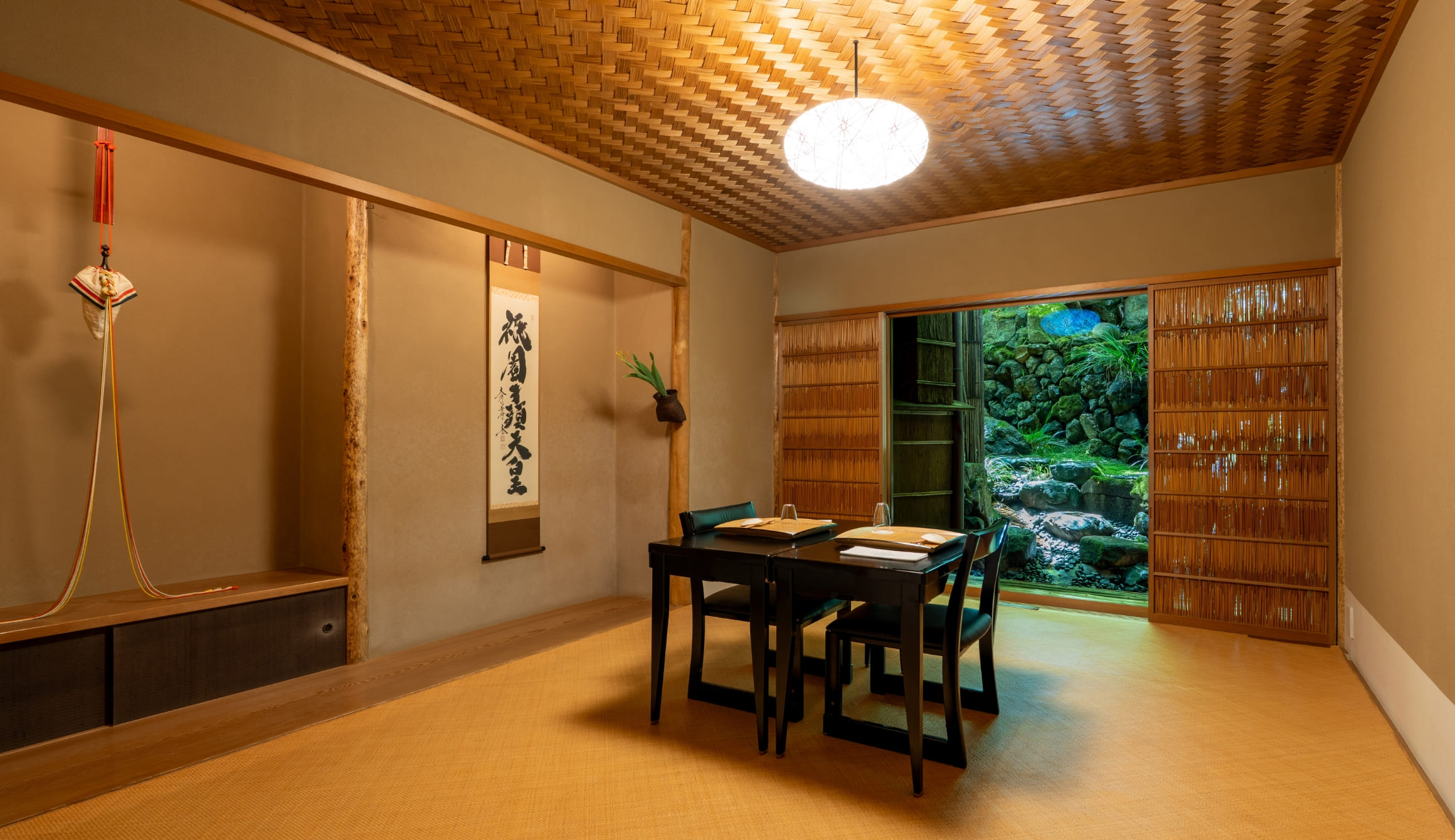
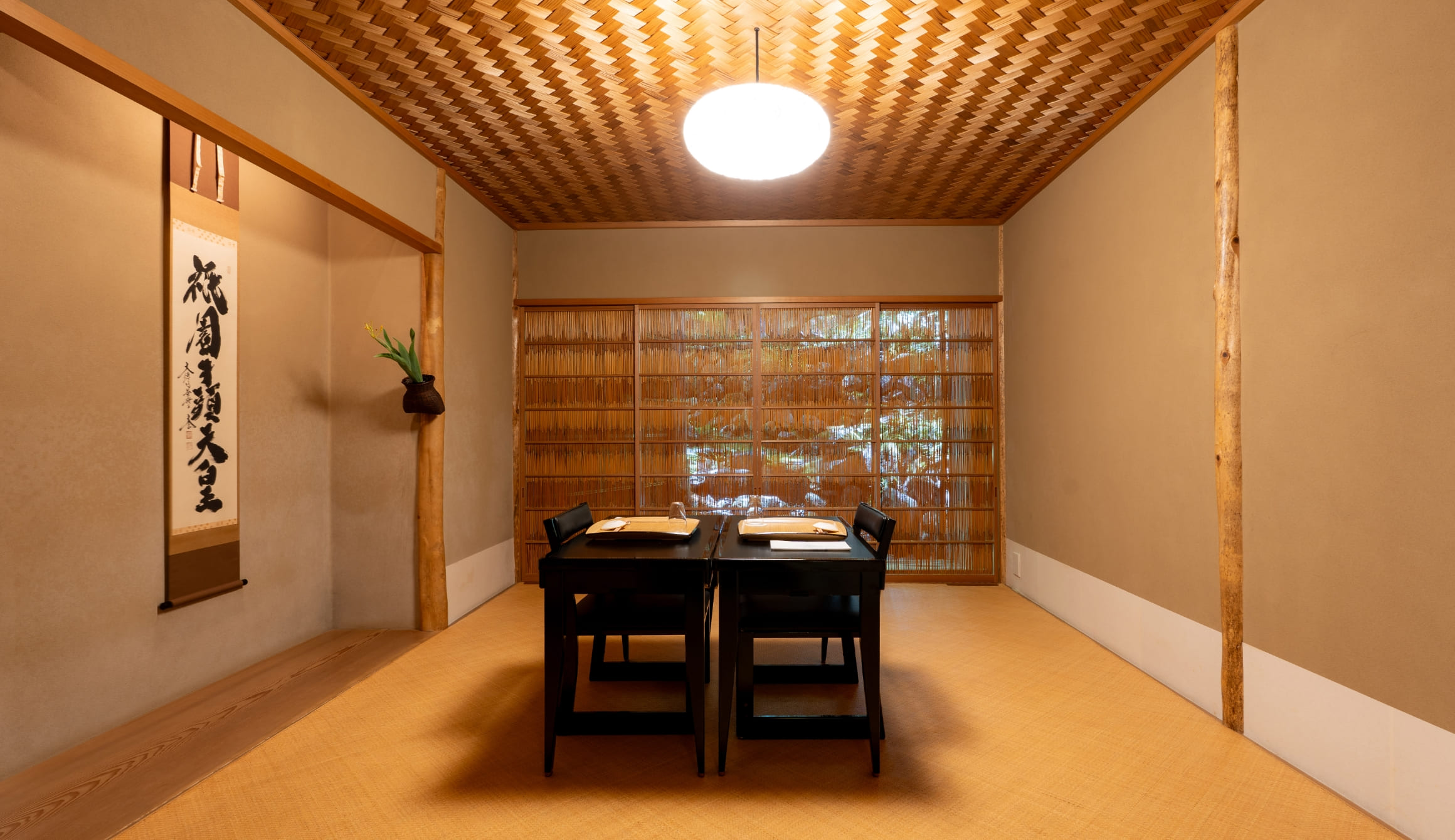
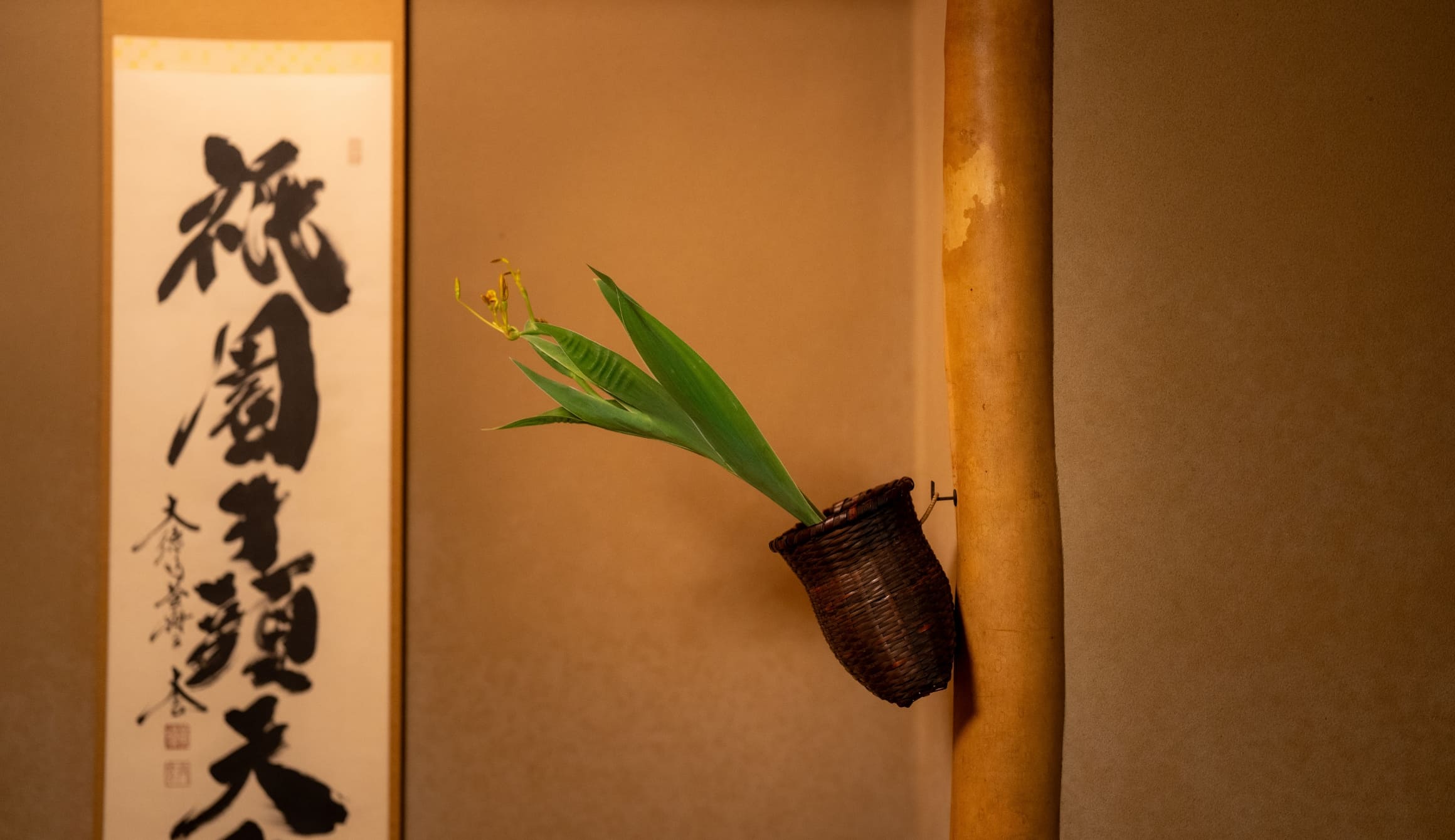
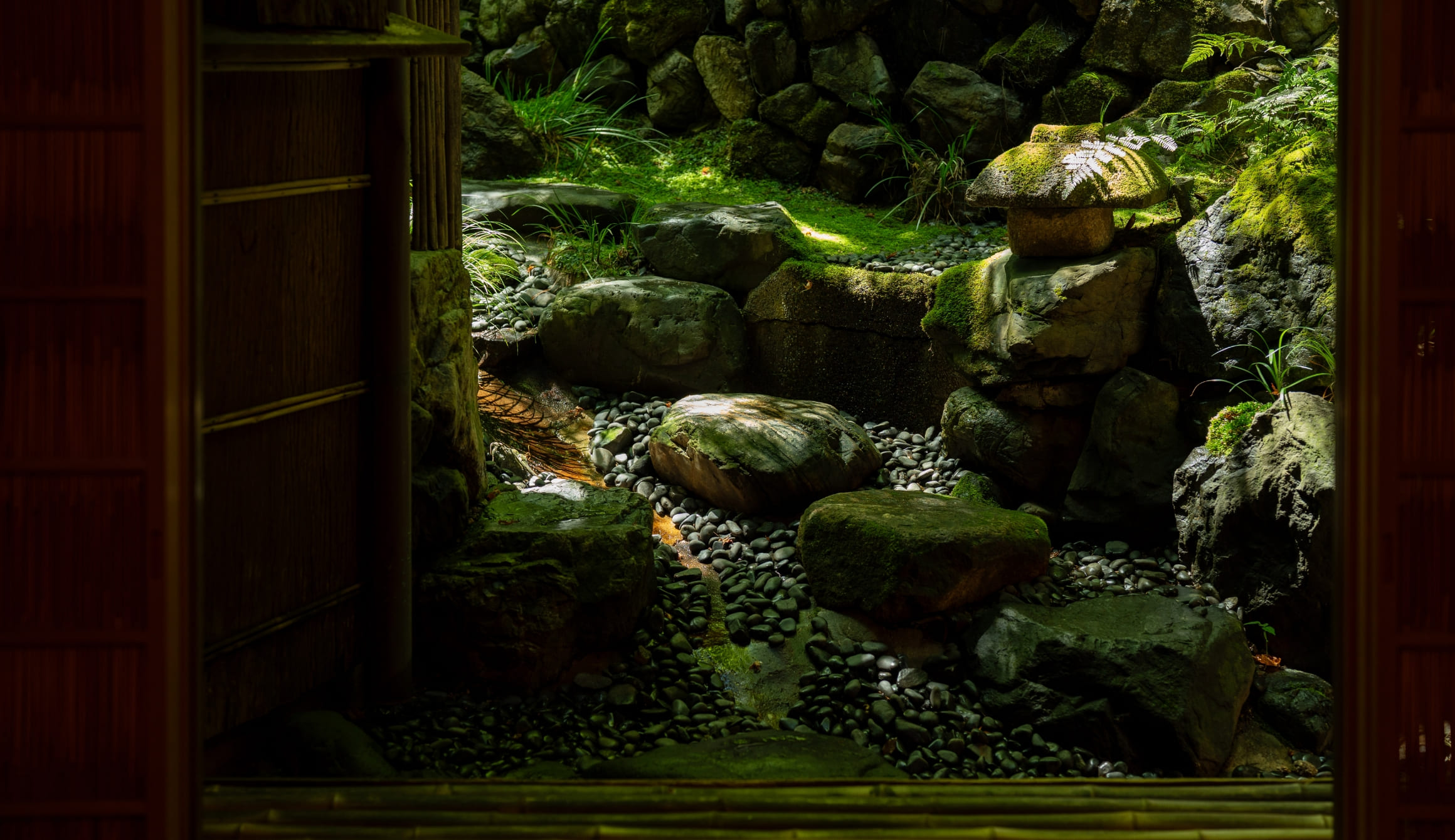
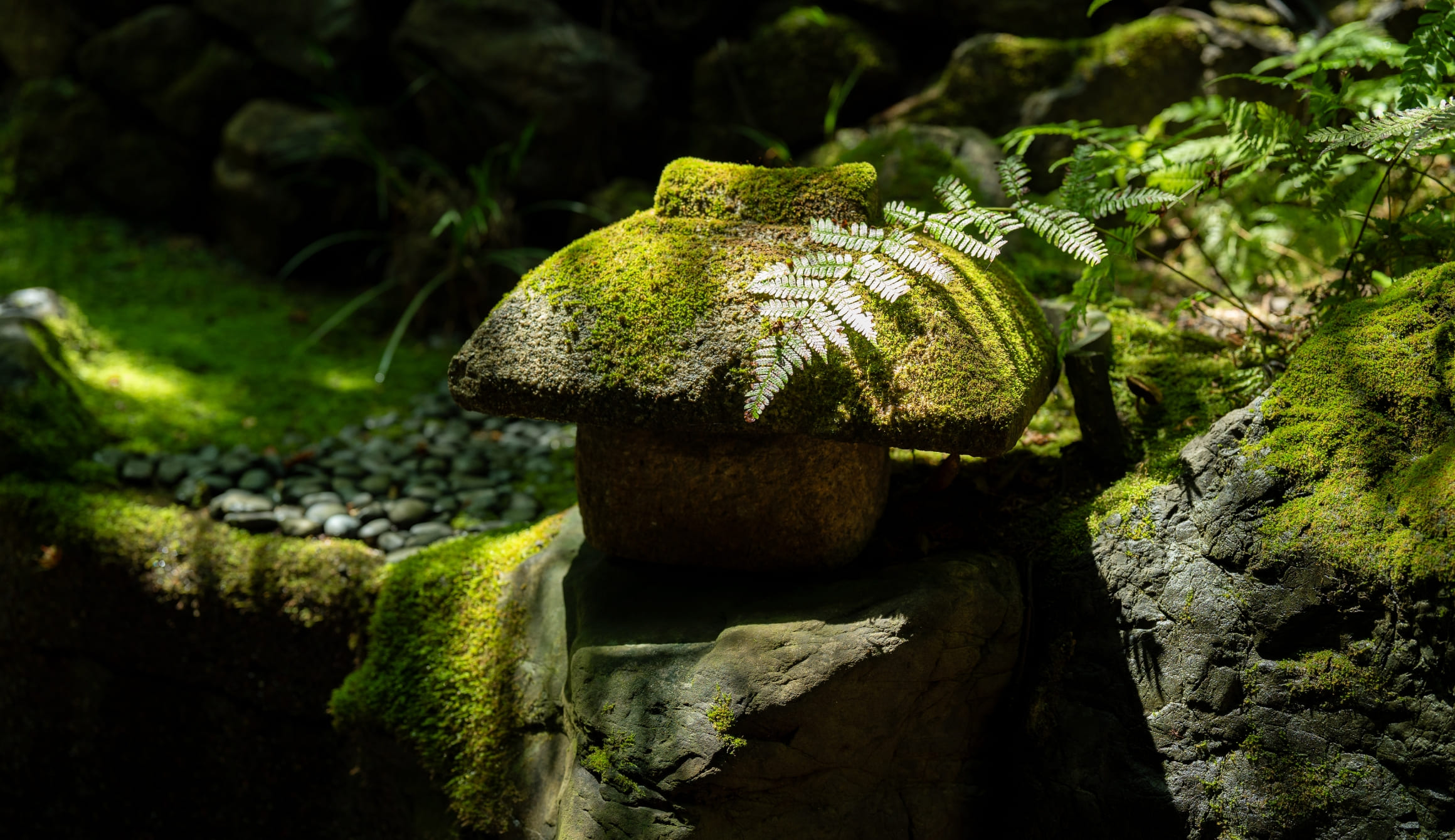
Details
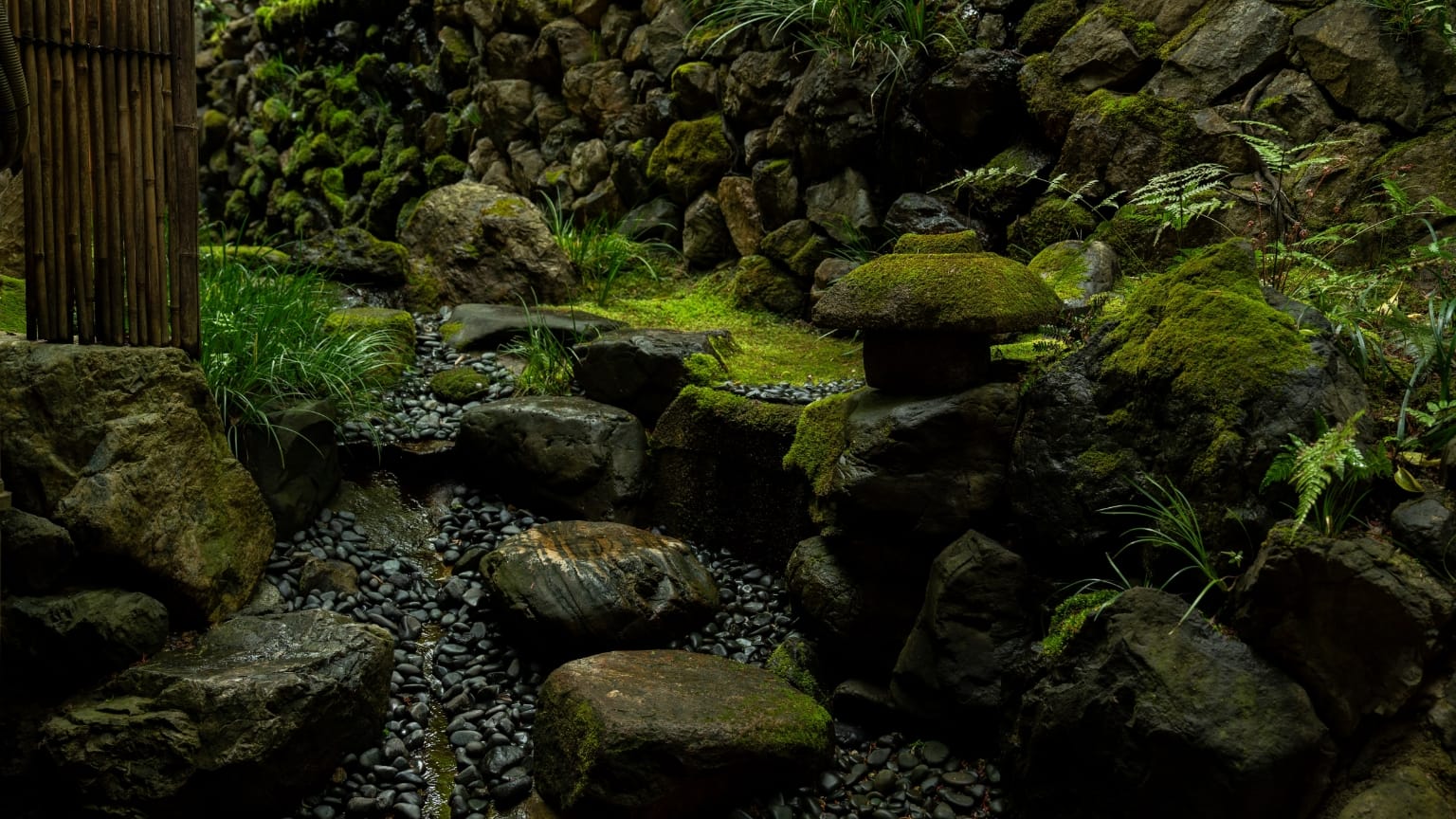
川が床下に流れこむような石の造作。川風まで部屋にそよいでくるようです。
The stonework resembles a river flowing under the floor, and appears to bring a gentle river breeze into the room.
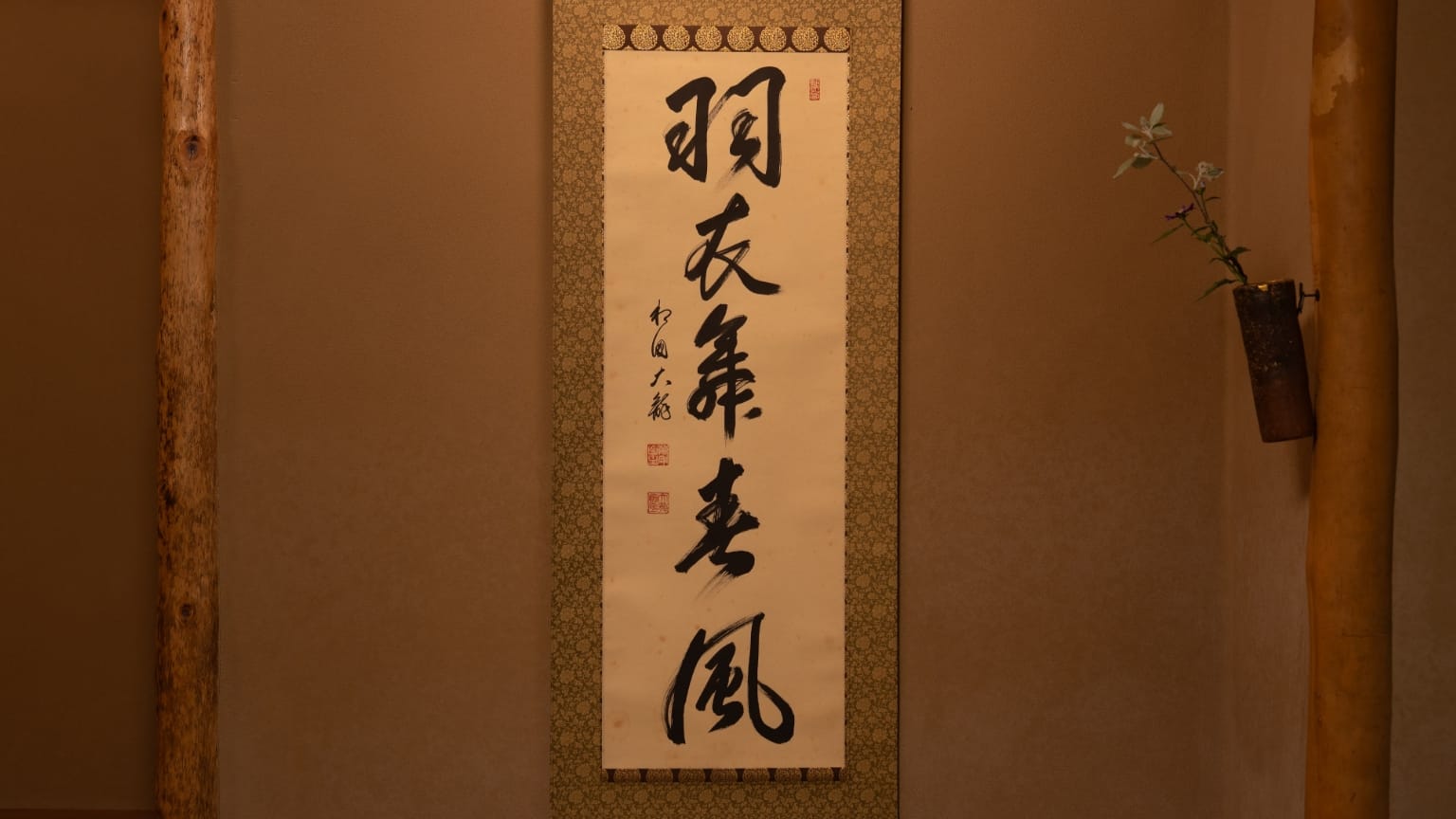
有馬賴底の筆による、禅語「羽衣春風舞」の掛け軸。床柱は斑模様が風情ある椿の木。
The kakejiku hanging scroll bears a Zen phrase by the Japanese Zen monk Arima Raitei. The alcove post is made of camellia wood with a charming mottled pattern.

五色の組紐に彩られた訶梨勒(かりろく)。邪気払いの意味をこめて、床脇の飾りに。
A kariroku ornamental bag decorated with braided cords in five colors. It adorns the alcove to ward off evil spirits.
